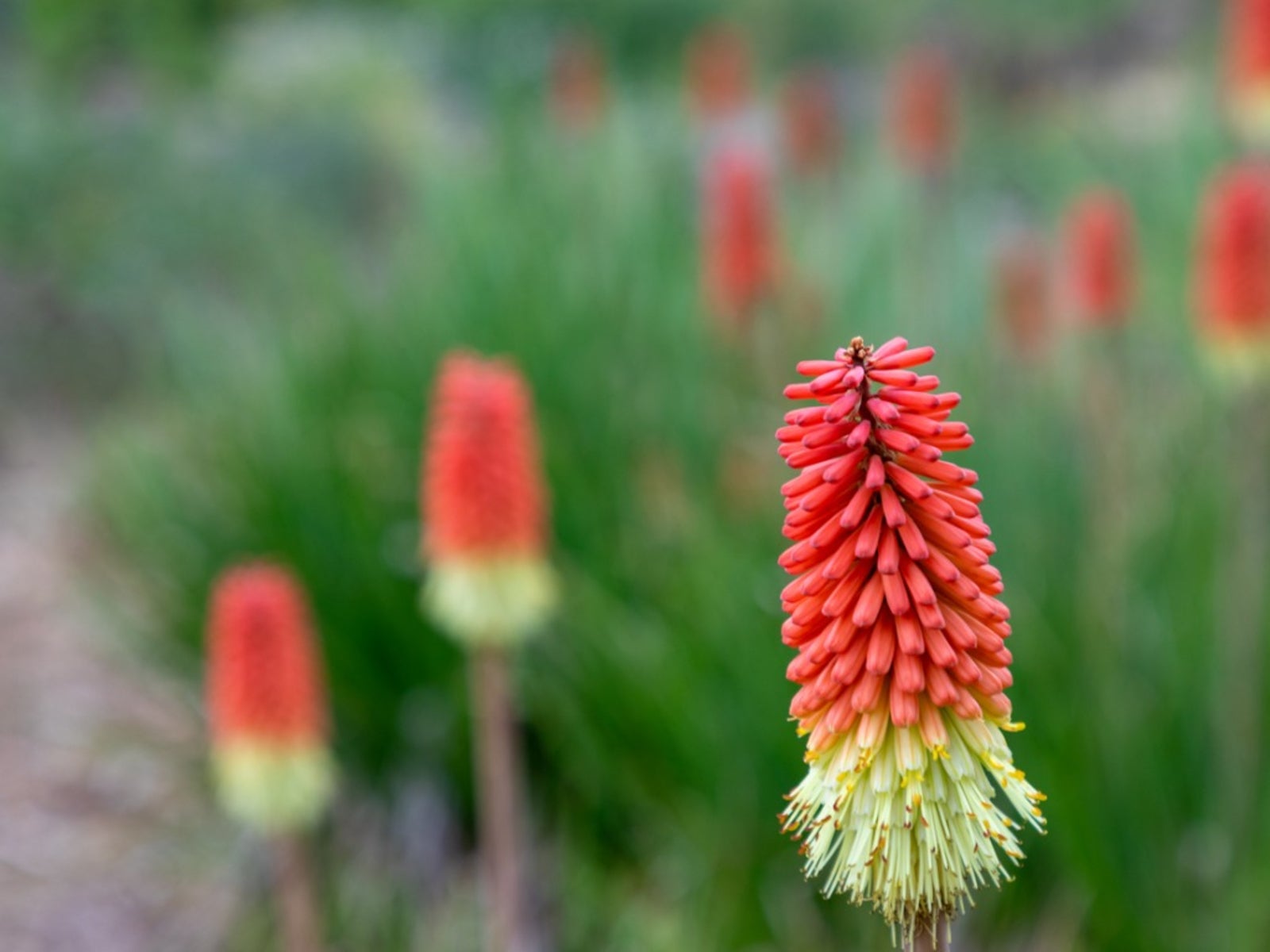Red Hot Poker Seed Propagation: How To Plant Red Hot Poker Seeds


Red hot poker plants are truly aptly named with their orange, red, and yellow flower spikes that look like blazing torches. These South African natives are popular ornamental perennials that crave sun and attract butterflies while being deer resistant. Red hot poker plants are easy to grow in well-draining soil. If you wish to start plants yourself, begin by collecting red hot poker seeds from a friend or neighbor, or order them from a reputable nursery. Here are a few tips on how to plant red hot poker seeds for a successful crop of "torch lily" that will bloom for years.
What Do Red Hot Poker Seeds Look Like?
Red hot poker propagation can be done with seed or division. If you already have a big clump of the plants, they will need to be divided every three to five years for better flower production. The plants also produce numerous babies or offsets that can be dug out from the main clump and planted separately. These plants also produce numerous seeds, which can be collected and planted. Growing red hot poker seeds is a simple process, but they do need a chilling period to break dormancy. The erect flower spikes will gradually fade and dry at the end of summer. The individual tubular blooms will fall off, but the ovaries will develop into seeds. What do red hot poker seeds look like? The entire floral spike will have pods filled with numerous small, dark brown seeds. Let all the florets drop from the flower spike and then cut off the entire stem. An important part of collecting red hot poker seeds is to let them dry. Pull the pods from the stems and lay them out to dry for at least 24 hours. Break open the seed pod over a dish to catch the small seeds. You are now ready for red hot poker seed propagation. The next step is to provide a chilling period to break dormancy and let the embryo know it is time to germinate.
How to Plant Red Hot Poker Seeds
Torch lily seeds will require full sun, well-draining soil, and plenty of organic matter. Before sowing, give them a cold treatment for four weeks. Place seeds in a baggie in the refrigerator for up to one month. Once the seeds have chilled, they are ready to plant. Sow seeds indoors six to eight weeks before planting out. Use a good potting mix in pots that are several inches (8 cm.) deep to preserve the taproot. Sow three seeds in each container and lightly dust with soil. Keep the containers where temperatures are 70 to 75 degrees F. (21-23 C.) and evenly moist. Expect germination in 21 to 28 days. In warm regions, you can also direct sow the seeds in prepared garden beds. When plants are small clumps several inches (8 cm.) wide, transplant them to the flower bed after hardening them off.
Growing Red Hot Poker Seeds
With a little luck and good care, red hot poker seed propagation should be successful, and you will have some mini-me torch lilies in pots. It isn't a good idea to continue to grow the plants in containers since they have a fairly long taproot. Moving them to a garden space with full sun and porous soil is the best way to grow red hot pokers. Expose indoor grown plants gradually to outside conditions over the course of a week to help them adjust and avoid shock. Set the plants into the soil at the same level at which they were growing in the containers. If you get them in the ground early enough, you should expect a bloom the first year. Remove spent flower spikes as they occur and cut the foliage back in late winter to early spring to allow new leaves room to grow. Provide mulch over the root zone in northern climates to protect the plant from cold. Divide your pokers every few years to promote blooming and dense clumps. These are very easy plants to grow, and you can save seeds or even baby clumps to trade with your garden friends.
Sign up for the Gardening Know How newsletter today and receive a free copy of our e-book "How to Grow Delicious Tomatoes".

Bonnie Grant is a professional landscaper with a Certification in Urban Gardening. She has been gardening and writing for 15 years. A former professional chef, she has a passion for edible landscaping.